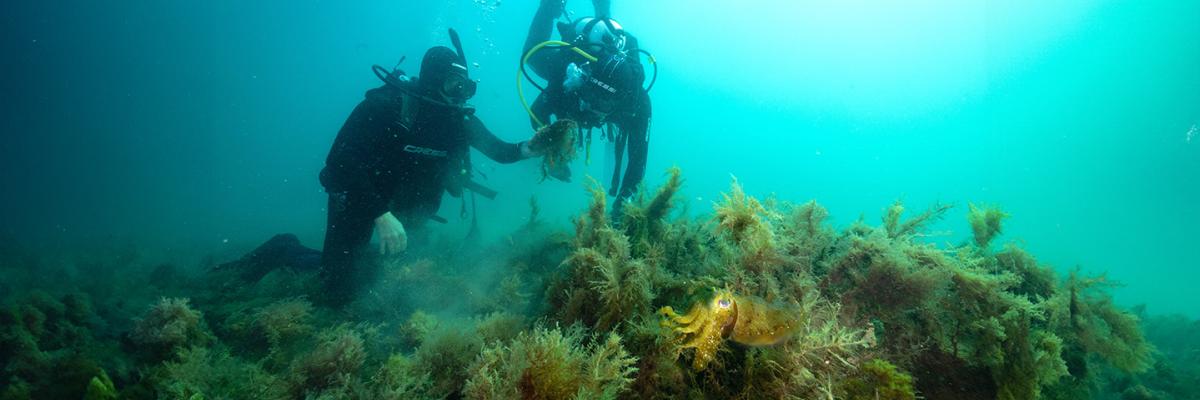Restoring lost reefs: bringing oysters back from extinction

With ‘ocean music’ and a multi-species approach, University of Adelaide research is helping restore reefs crucial to the recovery of lost ecosystems.
Oyster reefs once followed Australia’s coastline for almost half its length and provided a thriving environment for many kinds of organism. But within a hundred years of colonial settlement, they were dredged to near extinction. To the colonists, this meant fewer oysters to harvest; to the fish, crabs, and amphipods living in the reefs, it meant nowhere to call home.
‘These ecosystems provided the foundation for communities that spread far beyond the reef,’ says Dr Dominic McAfee, a researcher from the Environment Institute and the School of Biological Sciences.
‘There are very few left in the world.’
But the story does not end there. University of Adelaide’s Prof Sean Connell and Dr McAfee are conducting research to support a nationwide effort to recover the lost reefs. Already, the University has helped the South Australian Government and The Nature Conservancy to achieve the largest oyster reef restoration in the southern hemisphere, the Windara Reef. And now, they’re boosting the success of the restoration work with a novel and award-winning technique: underwater music.
When the Windara Reef foundations were laid, a layer of fast-growing turf algae covered the new surfaces, preventing the settlement of baby oysters. In response, the researchers applied a multi-species approach. They installed kelp, whose canopies formed a barrier against the algae, which freed a space for the oysters to settle.
How do oysters find the reef? This is where the ‘underwater music’ comes in.
Oysters—brainless invertebrates—are not as passive as we might think. They can see, smell, and hear, and these senses guide them to a suitable home. Sound travels better underwater than sight or scent, so that is what University researchers use to entice the oysters. But the ‘music’ isn’t Mozart: it’s the sound of a heathy reef.
‘The more intense the soundscape, the more oysters you get settling down,’ Dr McAfee said.
The team played their soundscapes near two reef restoration sites. These sites attracted up to 17,000 more oysters per square metre than other sites. And those oysters grew larger more quickly too, accelerating the reef’s development.
‘This innovative approach not only enhances the ecological restoration process but also demonstrates the remarkable potential of sound in marine conservation,’ Prof Connell said.
Once settled, the oysters provide complex habitats for diverse sea life, they serve as a vital food source for other species, and they clean the water with their filter feeding.
‘We consider them ecological superheroes.’
What’s next?
These restoration projects have the capacity to inspire others to come together to work on new restorations. Dr McAfee hopes that the University’s work can help generate a broader ‘restoration culture’, encouraging Australians to make restoration a part of their daily lives. Beyond Australia, nations around the globe are beginning to pursue their own reef restoration projects.
Thanks to the work of Prof Connell and Dr McAfee, and to the international work they’ve inspired, the next few hundred years may see us go beyond restoration. If the first step is to restore our environment to a state no worse than we found it in, then maybe the next step is to make our environment better than ever before.
